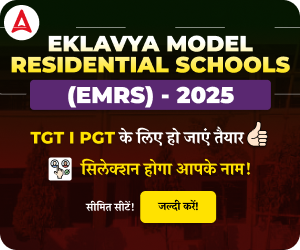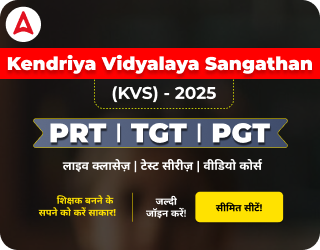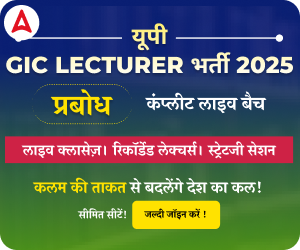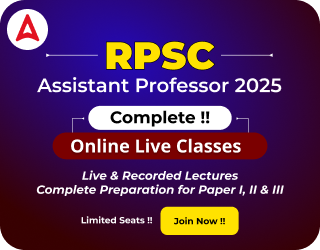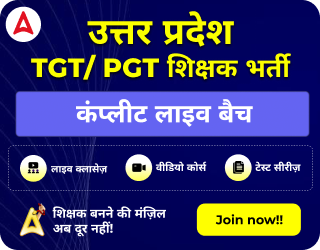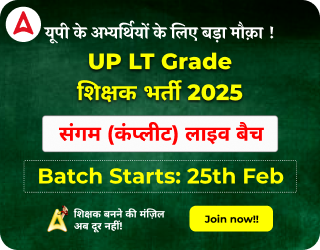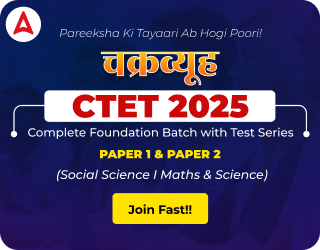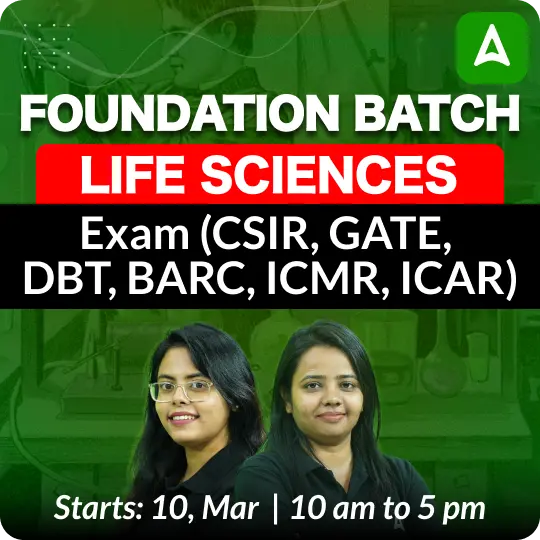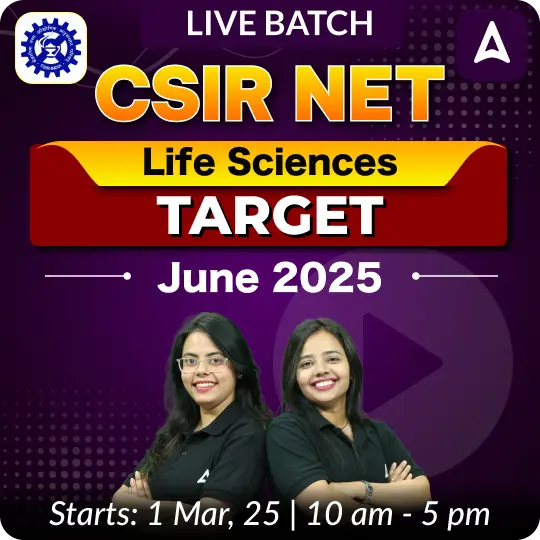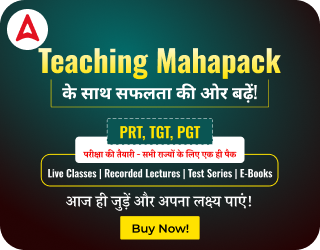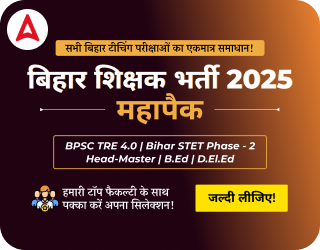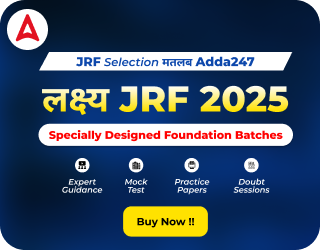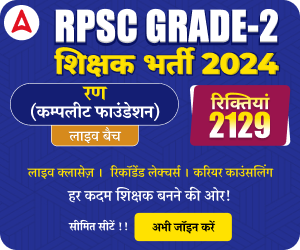Table of Contents
The Railway Teacher Syllabus for 2025 has been officially released on the RRB website. This syllabus outlines the topics and exam patterns for various teaching roles, including PGT (Post Graduate Teacher), TGT (Trained Graduate Teacher), PRT (Primary Teacher), Assistant Teacher (Female – Junior School), Librarian, Laboratory Assistant, Music Teacher, and Physical Training Instructor.
Candidates preparing for these positions should carefully review the detailed syllabus and exam structure to understand the Computer-Based Test (CBT), which is a crucial part of the Railway Teacher selection process. It is strongly recommended that candidates visit the official RRB website for comprehensive information and updates.
Railway Teacher Syllabus 2025
The Railway Recruitment Board (RRB) has recently released a notification for 753 teacher vacancies, inviting candidates to prepare for the written examination by thoroughly understanding the Railway Teacher Syllabus 2025 and the corresponding exam pattern for their chosen post. It is important for applicants to familiarize themselves with the exam’s structure, sections, subjects covered, and marks distribution as prescribed by the RRB for each role.
The Railway Teacher Recruitment 2025 encompasses 753 positions across various categories, including Post Graduate Teachers (PGT), Trained Graduate Teachers (TGT), Scientific Supervisor (Ergonomics and Training), Chief Law Assistant, Public Prosecutor, Physical Training Instructor (English Medium), Scientific Assistant (Training), Junior Translator (Hindi), Senior Publicity Inspector, Staff and Welfare Inspector, Librarian, Music Teacher (Female), Primary Railway Teacher (PRT), Assistant Teacher (Female) (Junior School), and Laboratory Assistant/School and Lab Assistant Grade III (Chemist and Metallurgist) within Zonal Railways and Production Units under the Ministerial and Isolated Categories.
Railway Exam Pattern 2025
The Railway Teacher Exam 2025 will be held online in Computer-Based Test (CBT) mode. The exam will feature 100 objective-type multiple-choice questions, carrying a total of 100 marks. Candidates will earn 1 mark for each correct answer, while 1/3 of a mark will be deducted for each incorrect response under the negative marking scheme. This structure emphasizes accuracy, rewarding correct answers while penalizing errors.
- Mode of Exam- Online (CBT mode)
- Type of Questions- Objective Type Multiple Choice Question
- Total Questions Asked- 100 Questions
- Total Marks Allotted- 100 Marks
- Time Duration: 90 Minutes
- Marking Scheme- 1 Mark awarded for each correct answer
- Negative marking- 1/3 marks deducted for each incorrect answer
Railway Teacher Syllabus for Mathematics
The Railway Teacher Syllabus for Mathematics is designed to assess candidates’ proficiency in mathematical concepts and ability to apply them effectively. Overall, the Railway Teacher Syllabus for Mathematics aims to ensure that candidates are well-equipped to deliver high-quality mathematics education in the railway sector.
RRB Teacher Syllabus 2025 for General Intelligence and Reasoning
The Railway Teacher Reasoning Syllabus includes important topics that candidates must cover to score well in the RRB Teacher Exam 2025. Understanding these topics is essential for success in the RRB Teacher Recruitment 2025.
Enhance your General Knowledge by reading newspapers and books. To excel in the GA section of the exam, you must cover the following syllabus topics. Here is a well-structured table for the given topics:
RRB Teacher Syllabus for General Science
The Railway Teacher syllabus for General Science is designed to evaluate candidates’ understanding of essential scientific concepts. It covers fundamental topics from Physics, Chemistry, and Biology, ensuring a well-rounded assessment of their knowledge. This section tests basic principles, practical applications, and scientific reasoning skills necessary for the exam. A strong grasp of these subjects will help candidates perform well in the RRB Teacher Recruitment 2025.
- Physics (up to 10th standard CBSE syllabus)
- Chemistry (up to 10th standard CBSE syllabus)
- Biology (up to 10th standard CBSE syllabus)
RRB Railway Teacher Marks Distribution 2025
The RRB Teacher Marks Distribution 2025 allocates a total of 100 marks across various subjects. Professional Ability (Post Wise) is the most significant section, comprising 100 questions for 100 marks. This is followed by General Awareness (15 questions for 15 marks) and General Intelligence and Reasoning (15 questions for 15 marks), each contributing to the overall score. The Mathematics and General Science sections both have 10 questions each, contributing 10 marks each to the total score. The distribution ensures a balanced assessment of subject knowledge, general awareness, reasoning ability, and basic science and mathematics skills.
| Railway Teacher Marks Distribution 2025 | ||
| Subject | No of Questions | Marks Allotted |
| Professional Ability (Post Wise) | 50 | 50 |
| General Awareness | 15 | 15 |
| General Intelligence and Reasoning | 15 | 15 |
| Mathematics | 10 | 10 |
| General Science | 10 | 10 |
| Total | 100 | 100 |
Railway Teacher Syllabus 2025 for General Section
The Railway Teacher Syllabus for the General Section covers subjects like mathematics, general intelligence and reasoning, and general awareness and general science which is common for all. The Mathematics section includes concepts such as number systems, BODMAS, algebra, geometry, mensuration, and time-related problems, among others. The General Intelligence and Reasoning section evaluates the ability to think logically through topics like analogies, coding and decoding, series, relationships, syllogism, and data interpretation.
General Awareness tests knowledge of current affairs, Indian geography, history (including the freedom movement), polity, economy, environmental issues, sports, and technological developments. Finally, the General Science section covers physics, chemistry, and life sciences based on the 10th standard CBSE syllabus, ensuring a balanced and comprehensive evaluation of the candidate’s aptitude across these core subjects.
| Railway Teacher Syllabus for General Section (Common For All) | ||
| Sl No. | Subjects | Topics |
| a. | Mathematics | Number Systems, BODMAS, Decimals, Fractions, LCM and HCF, Ratio and Proportions, Percentage, Mensuration, Time and Work, Time and Distance, Simple and Compound Interest, Profit and Loss, Algebra, Geometry and Trigonometry, Elementary Statistics, Square Root, Age Calculations, Calendar & Clock, Pipes & Cistern. |
| b. | General Intelligence and Reasoning | Analogies, Alphabetical and Number Series, Coding and Decoding, Mathematical Operations, Relationships, Syllogism, Jumbling, Venn Diagram, Data Interpretation and Sufficiency, Conclusions and Decision Making, Similarities and Differences, Analytical Reasoning, Classification, Directions, Statement- Arguments and Assumptions etc. |
| c. | General Awareness | Knowledge of Current Affairs, Indian Geography, Culture and History of India including the freedom movement, Indian Polity and Constitution, Indian Economy, Environmental issues concerning India and the World, Sports, General scientific and technological developments etc. |
| d. | General Science | Physics, Chemistry and Life Sciences (up to 10th standard CBSE syllabus). |
Railway Teacher Exam Syllabus 2025 for PGT and TGT
The RRB Teacher Exam Pattern 2025 for PGT and TGT positions is structured into three core sections: Education, Psychology of Learner & Teaching, and Curriculum and Instruction, with a total of 50 questions. The Education section, comprising 22 to 28 questions, delves into key topics such as the Philosophy of Education, the role of Sociology in the Indian context, Democracy in Education, and the significance of Human Values in teaching. The Psychology of Learner & Teaching section includes 13 to 18 questions that explore concepts of educational psychology, stages of growth and development, theories of intelligence, principles of motivation, and understanding exceptional children.
The final section, Curriculum and Instruction, consists of 8 to 12 questions focusing on curriculum planning and development, effective instructional methods, and essential teaching competencies. This exam pattern ensures a comprehensive evaluation of a candidate’s expertise in both theoretical and practical aspects of teaching.
| Railway Teacher Exam Pattern 2025 for PGT and TGT | ||
| Sl.No. | Topics | No. of Questions |
| 1 | Education | 22 to 28 |
| Philosophy of Education – various schools of Philosophy; Education according to Indian thinkers and Western thinkers. | ||
| Sociology and Education in the Indian Context – Sociological basis of education, Aspiration of Indian Society, Role & functions of the home, school community, religion, media and state as agents of socialization. Education as an agent of social change, social adjustment and socio-economic development. | ||
| Education, Culture and Human Values – Meaning and classification of values. Nature of moral and ethical values; Value oriented Education. Value crisis and role of education in resolving value crisis. Meaning and characteristics of culture and its relationship with education. Indian cultural Heritage and education. Cultural pluralism, cultural lag, cultural conflict, ambivalence and tolerance. | ||
| Democracy and Education – Concepts of equality, freedom, democracy, authority and discipline. Human rights education with reference to child’s rights. | ||
| Education and Integration – Role of teacher and Educational Institutions | ||
| 2 | Psychology of Learner & Teaching | 13 to 18 |
| Meaning, scope & Importance of educational psychology. Relationship of Education and Psychology; Process of Growth and Development; Intelligence: Its theories and measurement. Learning and Motivation; Psychology and education of exceptional children-creative, gifted, backward, learning disabilities, and mentally retarded. Evaluation | ||
| 3 | Curriculum and Instruction | 8 to 12 |
| Curriculum Development, Transaction, Instructional Methods – Teacher–Controlled Instruction (TCI); Learner–Controlled Instructions (LCI); Group–Controlled Instruction (GCI); Skills and Competencies; Means of Instruction Delivery. | ||
| Total | 50 | |
Railway Teacher Syllabus 2025 for Primary Teachers
The Railway Teacher Syllabus 2025 for Primary Teachers focuses on various key aspects related to teaching and learning. It includes topics such as understanding the learner, which covers concepts like growth, development, adolescence, and the role of socialization agencies, constituting 18 to 20 questions. The syllabus also delves into theoretical perspectives on learning, including behaviorism, cognitivism, and constructivism, and explores teaching methods, classroom management, curriculum design, and assessment, accounting for 18 to 20 questions.
It emphasizes creating a conducive learning environment, addressing diversity, disabilities, and mental health and highlights school leadership, community engagement, and educational policies such as NEP-2020. The total number of questions in the syllabus is 50, with a total focus on developing effective teaching practices, leadership skills, and a holistic educational approach.
| Railway Teacher Exam Pattern 2025 for Primary Teachers | ||
| Sl. No. | Topics | No. of Questions |
| a | Understanding the Learner: | 18 to 20 |
| – Concept of growth, maturation, and development, principles and debates of development, development tasks and challenges. | ||
| – Domains of Development: Physical, Cognitive, Socio-emotional, Moral, etc., Deviations in development and its implications. | ||
| – Understanding Adolescence: Needs, challenges, and implications for designing institutional support. | ||
| – Role of Primary and Secondary Socialization Agencies. Ensuring Home-school continuity. | ||
| b | Understanding Teaching Learning: | 18 to 20 |
| – Theoretical perspectives on Learning – Behaviorism, Cognitivism, and Constructivism with special reference to their implications for: | ||
| – The role of the teacher | ||
| – The role of the learner | ||
| – Nature of teacher-student relationship | ||
| – Choice of teaching methods | ||
| – Classroom environment | ||
| – Understanding of discipline, power, etc. | ||
| – Factors affecting learning and their implications for: | ||
| – Designing classroom instructions | ||
| – Planning student activities | ||
| – Creating learning spaces in school | ||
| – Planning and Organization of Teaching-Learning | ||
| – Concept of Syllabus and Curriculum, Overt and Hidden Curriculum | ||
| – Foundational Literacy and Numeracy, Early Childhood care and Education | ||
| – Competency-based Education, Experiential learning, etc. | ||
| – Instructional Plans – Year Plan, Unit Plan, Lesson Plan | ||
| – Instructional material and resources | ||
| – Information and Communication Technology (ICT) for teaching-learning | ||
| – Assessment of learning, for learning, and as learning: Meaning, purpose, and considerations in planning each. | ||
| – Enhancing Teaching-Learning processes: Classroom Observation, Feedback, Reflections, and Dialogues as a means of constructivist teaching. | ||
| c | Creating a Conducive Learning Environment: | 4 to 6 |
| – The concepts of diversity, disability, and Inclusion, implications of disability as a social construct, types of disabilities-their identification and interventions | ||
| – The concept of school mental health addressing the curative, preventive, and promotive dimensions of mental health for all students and staff, Provisioning for guidance and counseling. | ||
| – Developing School and Community as a learning resource. | ||
| d | School Organization and Leadership: | 4 to 6 |
| – Leader as a reflective practitioner, team builder, initiator, coach, and mentor. | ||
| – Perspectives on School Leadership – instructional, distributed, and transformative. | ||
| – Vision building, goal setting, and creating a School Development Plan | ||
| – Using School Processes and forums for strengthening teaching-learning: Annual Calendar, time-tabling, parent-teacher forums, school assembly, teacher development forums, using achievement data for improving teaching-learning, school self-assessment and Improvement. | ||
| – Creating partnerships with community, industry, and other neighboring schools and Higher Education Institutes-forming learning communities. | ||
| e | Perspectives in Education: | 2 to 3 |
| – Role of school in achieving aims of education. | ||
| – NEP-2020: Early Childhood Care and Education: The Foundation of Learning; Foundational Literacy and Numeracy; Curriculum and Pedagogy in Schools; Holistic & Integrated Learning; Equitable and Inclusive Education: Learning for All; Competency-based Learning and Education. | ||
| – Guiding Principles for Child Rights, Protecting and provisioning for the rights of children to a safe and secure school environment, Right of Children to Free and Compulsory Education Act, 2009. | ||
| – Historically studying the National Policies in education with special reference to school education. | ||
| – School Curriculum Principles: Perspective, Learning and Knowledge, Curricular Areas, School Stages- Pedagogy and Assessment. | ||
| Total | 50 | |
Railway Teacher Syllabus 2025 for Physical Training Instructor
The RRB Teacher Exam Pattern 2025 for the Physical Training Instructor position is divided into five sections, covering diverse aspects of physical education and sports. The Physical Education in India section consists of 10 to 12 questions on the principles of physical education, health promotion, and the use of audio-visual aids. The Anatomy, Physiology, Exercise, Nutrition, Diet & Hygiene section contains 15 to 17 questions focusing on fitness principles, nutrition, and hygiene. The Sports Injuries, Prevention & Health Education, Sports Medicine section includes 16 to 20 questions on common sports injuries and their prevention. The Camping for Recreation section has 2 to 3 questions, and the Important Games and Sports section covers 4 to 6 questions. In total, the exam comprises 50 questions, testing candidates’ expertise across these key areas.
| Railway Teacher Exam Pattern 2025 for Physical Training Instructor | ||
| Sl.No. | Topics | No. of Questions |
| 1 | Physical Education in India | 10 to 12 |
| Objectives, Principles, and Components of Physical Education; Indian Olympic Association and International Olympic Committee; Role of Different Agencies in Promoting Health (WHO, UNICEF, Local Bodies); Concepts of Incentive, Achievement; Organisation of other Physical Education and Sports Event (Seminar, Clinic, Lecture); Use of Audio-Visual Aids in Physical Education. | ||
| 2 | Anatomy, Physiology, Exercise, Nutrition, Diet & Hygiene | 15 to 17 |
| Physical Activity – Concept, Benefits of Participation in Physical Activities with Specific Reference to Health; Concept, need, components, and Significance of total fitness. Principles of Physical Fitness, Warming Up, Conditioning, and Cooling Down, Methods to Develop; and Measure Health and Skill-related components of Physical fitness. | ||
| Wellness – Concept, components, Significance with reference to positive lifestyle. Concept of nutrition, balanced diet, Dietary Aids. | ||
| Energy and Activity – Calorie Intake and expenditure, energy balance equation, role of personal hygiene, mental hygiene, sleep hygiene, occupational hygiene in physical education and sports. | ||
| 3 | Sports Injuries, Prevention & Health Education, Sports Medicine | 16 to 20 |
| Basic Concept, need and importance of anatomy and physiology in physical education. Definition and description of cell, tissue, organ, and system. | ||
| Brief introduction to skeletal system, muscular system, circulatory system, respiratory system, digestive system, excretory system, nervous system, and endocrine system. | ||
| Physiological factors affecting the development of physical fitness components. Concepts of fatigue, stitch, cramp, oxygen debt, second wind. | ||
| Markers for training effects – Maximum heart rate, vital capacity, snake volume, temperature regulation. | ||
| Postural Deformities – Types and causes (hypnosis, scoliosis, lordosis, knock knees, bow knees, flat foot) Corrective exercises. | ||
| Sports medicine and athletic care – Concept and significance, factors causing injuries. | ||
| General principles of prevention of injuries – Common sport injuries (strain and muscle and ligament sprain, frozen shoulder, lower back strain, Tennis and Golfer’s elbow, Runner’s knee, shin pain, blister, concussion, laceration, abrasion, hematoma, fracture, dislocation). | ||
| Management of injuries (strain and muscle and ligament sprain, frozen shoulder, lower back strain, Tennis and Golfer’s elbow, Runner’s knee, shin pain, blister, concussion, laceration, abrasion, fracture, dislocation). Sport injuries and first aid. | ||
| Rehabilitation – Aim and objective, recovery (lee bath, contrast bath, hot fomentation). Therapeutic modalities (therapeutic ultrasound, Inferential Therapy Unit, TENS infrared lamp, wax bath, short wave diathermy). | ||
| Definition, scope, and importance of sports psychology. Learning – Concept and principles of learning, learning curve. Emotion, anxiety, and stress management in Sports. | ||
| 4 | Camping for Recreation | 2 to 3 |
| 5 | Important games and sports | 4 to 6 |
| Total | 50 | |
Railway Teacher Syllabus 2025 for Music Teachers
The RRB Teacher Exam Pattern 2025 for the Music Teacher position consists of six sections, each covering various aspects of music theory and practice. The first section, Appreciation of Music, Bada Khayal and Chota Khayal, Brief History of Bharatnatyashastra and Sangeet Ratnakar, Classification of Music, contains 8 to 12 questions. The second section, Concept of Rags and Talas in Indian Music, Classification of Ragas, Concept Singing, Different Gharanas and Their Histories, Evolution of Notation System, Forms of Light Music, also includes 8 to 12 questions.
The third section, History of Indian Music, Arts, Importance of Music Festivals/Seminars/Conferences, will have 7 to 11 questions. The fourth section, Laws of Acoustics, Musical Sound Wave Motion, Frequency, Pitch, Volume, contains 7 to 11 questions. The fifth section, Music and Literature, Place of Music in Fine Arts, Role of Music in Multimedia, Taal Study, Vocal and Instrumental Music, will feature 7 to 11 questions. Finally, the sixth section, Computer and its Applications, will have 2 to 4 questions. In total, the exam will consist of 50 questions, testing candidates’ comprehensive knowledge of music theory, history, and application.
| Railway Teacher Exam Pattern 2025 for Music Teacher | ||
| Sl.No. | Topics | No. of Questions |
| 1 | Appreciation of music, Bada Khayal and Chota Khayal, Brief History of Bharatnatyashastra and Sangeet Ratnakar, Classification of music. | 8 to 12 |
| 2 | Concept of rags and talas in Indian music, classification of ragas, concept singing, different gharanas and their histories, evolution of notation system, forms of light music. | 8 to 12 |
| 3 | History of Indian music, arts, importance of music festivals/ seminars/ conferences. | 7 to 11 |
| 4 | Laws of acoustics, musical sound wave motion, frequency pitch, volume. | 7 to 11 |
| 5 | Music and Literature, Place of music in fine arts, Role of music in multimedia, Taal study, Vocal and Instrumental music. | 7 to 11 |
| 6 | Computer and its Applications | 2 to 4 |
| Total | 50 | |
Railway Teacher Exam Pattern 2025 for Assistant Teacher
The Railway Teacher Exam Pattern 2025 for Assistant Teacher is designed to evaluate candidates’ expertise across three primary sections, comprising a total of 50 questions. The Educational Psychology section, which includes 25 to 29 questions, examines critical topics such as intelligence, learning theories, child development, personality development, and understanding individual differences among children. The Education Technology & Teaching-Learning Process; Communication Skills section consists of 18 to 22 questions, focusing on the effective use of teaching-learning materials, integration of multimedia resources, management of multilingual classrooms, and strategies for remedial teaching.
Lastly, the Computer and Its Applications section, with 2 to 4 questions, assesses candidates’ foundational knowledge of computer technology and its practical applications in education. This comprehensive pattern ensures a thorough evaluation of the candidates’ grasp of psychological principles, instructional strategies, and technological proficiency, essential for modern teaching roles.
| Railway Teacher Exam Pattern 2025 for Assistant Teacher | ||
| Sl No. | Topics | No. of Questions |
| 1 | Educational Psychology | 25 to 29 |
| – Intelligence: Nature, Meaning & Measurement | ||
| – Learning | ||
| – Growth and development of Child | ||
| – Personality Development and Adjustment | ||
| – Individual Differences among Children | ||
| 2 | Education Technology & Teaching-Learning Process; Communication Skills | 18 to 22 |
| – Teaching-learning materials: textbook, multi-media materials, multilingual resources of the classroom | ||
| – Remedial Teaching | ||
| 3 | Computer and its Applications | 2 to 4 |
| Total | 50 | |
Railway Teacher Syllabus 2025 PDF
In the following table, candidates will find the RRB Teacher Syllabus 2025 PDF available for download. The candidates must download the PDF for the Railway Teacher Syllabus Syllabus 2025 to refer to the syllabus through their preparation regime.
| Railway Teacher Syllabus 2025 PDF | |
| Railway Teacher PGT Syllabus 2025 | Download PDF Now |
| Railway Teacher TGT Syllabus 2025 | |
| Railway Teacher PRT Syllabus 2025 | |
| Railway Teacher Physical Training Instructor Syllabus 2025 | |
| Railway Teacher Music Teacher Syllabus 2025 | |
| Railway Teacher Assistant Teacher Syllabus 2025 | |




 UGC NET Music Syllabus 2025, Download PD...
UGC NET Music Syllabus 2025, Download PD...
 Rajasthan BSTC Syllabus 2025, राज�...
Rajasthan BSTC Syllabus 2025, राज�...
 GAT B Syllabus 2025, Check Section-wise ...
GAT B Syllabus 2025, Check Section-wise ...
